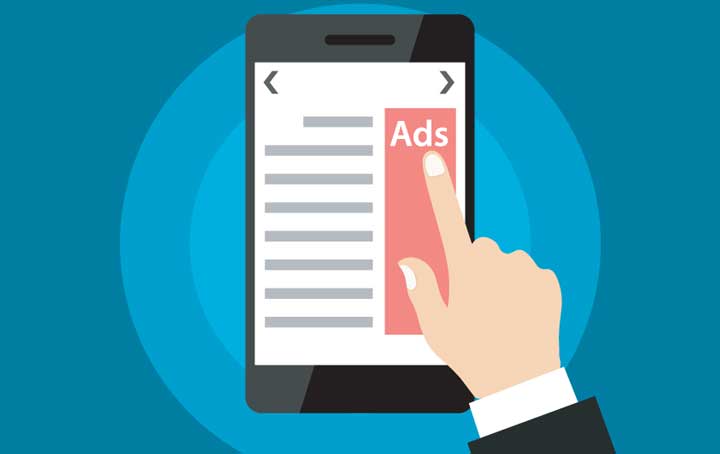Share This
Social Media Ad Types for Service Businesses

For many businesses, social media efforts comprise an important and integral component of their larger digital marketing strategy. Importantly, many in marketing take an approach that favors utilization of all available marketing channels over a narrow approach that excludes many available means of connecting with potential clients and customers.
When it comes to social media, a basic understanding of different popular platforms may help inform decisions about which ones to use and how they might be used. For local service businesses, social media ads can be extremely helpful, enabling clients to easily connect with service providers.
Not only is it important to understand each platform and how it can be used, but it’s important to understand how ads work across various platforms, the considerations that one might take for each type, and how to choose the right types for your business.
We’ll explore some of the more common and popular social media platforms–Facebook, Instagram, Twitter, Linkedin, and Tik Tok–as well as how ads look relative to each one and how you may be able to choose the best platform(s) and ad formats for your business when it comes to running ads as part of your digital marketing strategy.
Facebook Ad Types
Facebook is one of the most commonly used social media platforms. In the first quarter of 2023, parent company Meta, reported as many as 2.04 billion–with a “b–” daily active users and as many as 2.99 billion monthly active users. The bottom line is there are a lot of people on Facebook. Naturally, Facebook represents plenty of opportunities for local service businesses. To best make use of this platform, it can be important to understand the types of ads you can use. For Facebook, you’ll be able to choose from various categories of ad types:
Image and video:
Images are fairly straightforward. This ad type enables you to present ads in an image format. Images can be far more effective than simple text alone, so many organizations opt for images as a standard and basic ad format. Since moving images can be even more noticeable than still images, video ads are often an excellent choice. Potential pros of image and video ads are that they’re straightforward and simple to use, while potential cons include that they offer fewer ways to engage with your audience.
Carousel:
With carousel-type ads, you’re able to present viewers with more than a single image or video. Instead, you can display up to 10 different images or videos and assign each one its own unique link. For example, if you wanted to show off a new collection of goods, you could upload a video or picture for up to ten different products and attach a link to each one to the relevant product page or landing page. Potential pros include that these are ideal for showcasing products, while potential cons include that they rely on users clicking on links.
Instant Experience:
Instant experiences are pretty aptly named. With an instant experience, when a viewer clicks your ad, a fullscreen experience will open up. Instant experience style ads work with the other formats we’ve already covered–images, videos, and carousels of both. An instant experience ad will expand to fullscreen when a user taps on it on a mobile device–so you can easily grab their attention. However, instant experiences do not work for desktop viewers.
Collection:
Like a carousel-type ad, a collection-type ad enables you to showcase multiple images or videos and can easily be used to showcase a collection of products. You’ll be able to showcase a cover image or video and four additional videos or images–ideal for showcasing a collection of products. Collection ads also offer you the ability to create a post-click experience in the form of an instant experience. Potential pros include that you can easily showcase goods and users can shop without even leaving Facebook, while potential cons include that these types of ads may be better suited for driving purchases and conversions than expanding your audience.

Instagram Ad Types
As Instagram and Facebook are both owned by Meta, it’s perhaps no surprise that Instagram ad formats share many commonalities with those of Facebook. In Fact, Instagram ads can also be images, videos, collections, and carousels. However, Instagram offers a few additional ad types:
Reels:
Reels are a popular medium for videos; they’re short in length and feature full-screen vertical videos. As reels are commonly viewed on mobile devices such as phones, only fullscreen vertical assets can be used in reel-type ads. Potential cons include that reels tend to be short and must be vertical; pros include that reels are a great way to quickly get viewers’ attention, and they’re excellent for showcasing services.
Instagram Stories
Instagram stories are a popular way for Instagram users to view images and videos posted by the accounts they follow. Instagram story ads are shown to users as they view stories. These can be aspect ratios used in other formats, but Meta recommends using fullscreen vertical assets.
Twitter Ad Types
Twitter boasts hundreds of millions of users. It’s also a platform frequented by politicians, public officials, and well-known public figures, making it a vast source of information for many users. As many have come to rely on Twitter for information, entertainment, and keeping up with their favorite public figures, it also represents a large opportunity for marketing teams of local service businesses. We’ll explore a few of the ad options that Twitter offers:
Promoted Ads/Promoted tweets
These are just like normal tweets, but they’re promoted by Twitter in order to increase their reach. These are useful for a range of different purposes. Promoted ads can feature images, videos, and carousels and can be used to offer CTAs, showcase products, and more. There’s even an option to promote moment ads, which enable you to curate a collection of tweets. These can be highly useful to local service businesses who wish to showcase products, gain additional reach, and drive traffic to their website.
Trend Takeover/Trend Takeover+
One notable function of Twitter is that users can see trending topics as they log in. Trend Takeover and Trend Takeover+ offer you the ability to take advantage of trending topics and place your brand alongside them. These will show up in the explore tab and can be particularly useful to organizations that want to quickly increase visibility among a targeted audience. For local service businesses, this can be especially useful if you know what kinds of topics your targeted audience is interested in and if you’re hosting a big launch, but it may be less useful for long-term consistent marketing.
Follower Ads
These are ads that encourage users to follow your Twitter account. They’re similar to promoted tweets, yet differ in that rather than simply promoting a concept, product, or whatever else you might want to promote, they promote you on Twitter. As such, these are ideal for local service businesses that want to grow their following on Twitter but may be less useful if you want to drive conversions and not just an additional audience.

Linkedin Ad Types
Linkedin is one of the most commonly used social media platforms, especially among the business community. Though Linkedin is often seen as a business social network, it isn’t only useful to B2B businesses. Rather, the users of Linkedin comprise a vast and diverse audience of many professionals who are also, of course, consumers. As such, Linkedin advertising represents a significant opportunity for local service businesses to engage with their target audience. Here are some of the ad types available through Linkedin:
Text ads/ Single Image / Carousel Image Ads
These are fairly straightforward and like other ad types, can be targeted to specific audiences. Single images are an ad with a single image, while carousel image ads enable you to present multiple images in the form of swipeable cards. Text ads simply contain text. Through carousel ads, you’re also able to add a landing URL for each individual card. These can be highly effective for displaying product lines or encouraging viewers to visit your website, and for local service businesses, they may be particularly useful for showcasing products and services. However, for some audiences, they may be less engaging than video ads, for example.
Video Ads
Video ads work much in the same way as image ads, though rather than featuring still images, they feature moving videos. These can be highly engaging, and moving videos can be a great way to draw eyes. These can be a highly effective way to reach out to potential customers or clients and display products in use. Potential cons of video ads include that they can rely on consistent internet speeds, while potential pros include that they can be highly engaging.
Document Ad
This ad type is somewhat novel, and Linkedin stands out for offering it. With document ads, you’re able to promote a document in PDF, DOCX, DOC, PPT, or PPTX format. From here, viewers can read and download the document without leaving Linkedin. This can be a highly useful way to promote readership of a certain document, though local service businesses may find this ad type less useful for showing off products or driving traffic to their own domain or even less engaging among certain audiences. Still, for businesses that rely on being an authority for their brand reputation, this is an excellent way to share important information with readers.
Dynamic Ads
Dynamic ads are special ads that are–as the name suggests–dynamic. Rather than the ad appearing the same for all of the targeted audience, these ads are personalized to different viewers based on their Linkedin information. For local service businesses, these can be useful in grabbing the attention of users through personalization. Potential pros include that these ads can be highly personalized, while potential cons include that they may be seen as less predictable.
Sponsored Messaging
This is a novel ad type that enables you to reach out directly to users through direct messaging. These are sent to users only when they’re online and active, making them more likely to be seen and replied to. These can be especially useful to local service businesses looking to engage directly with potential customers and clients. Potential pros include that this ad type is very direct, while potential cons include that they can be costly.
TikTok Ad Types
TikTok boasts hundreds of millions of users, and in the United States alone, over 100 million active users. Toktok is particularly popular among young people and has quickly become a dominant force in social media. As such, many organizations feel that it’s important to be active on Tik Tok, and Tik Tok ads are often seen as a valuable opportunity for marketing teams. Here are some of the ad types available through Tik Tok:
In-Feed Ads
TikTok users navigate through a feed of content curated for them. This is one of the things that makes Tik Tok so effective; users are shown content that’s determined to be relevant to them through robust algorithms. Users can spend considerable time in their feed, and in-feed ads are ads inserted into their feed in between other Tik Tok videos. These can be highly effective for local service business marketing teams looking to gain more engagement but may be less engaging than other ad types.
Branded Challenges
One of the ways users engage through Tik Tok is by participating in challenges. TikTok challenges encourage users to contribute content and participate in trends. Naturally, this presents a notable opportunity for marketing teams, who can create branded hashtag challenges and encourage their viewers to participate. This can be a highly effective way to garner engagement, as users tend to find challenges compelling. However, this may be more effective for driving engagement and brand visibility and may be less effective at driving conversions.
Branded Effects
Similar to branded challenges, branded effects offer a way for organizations to leverage the tendency of Tik Tok users to create their own content. Branded effects are things like filters that users can use to create their own content. By attaching these to your brand, you can aim to gain significant visibility. As is the case with branded challenges, this may be more effective for teams looking to expand their brand’s visibility than for those looking to drive conversions among their existing audience.
Spark Ads
As internet users grow increasingly aware of the advertising all around them, it can sometimes be helpful to make advertising seem more organic. Spark ads enable businesses to do just that by promoting organic Tik Tok content. Spark ads can even be used with Tik Tok content created by other creators, given that they grant you permission. Spark ads can be particularly useful for marketing teams of local service businesses looking to break into tough audiences who are wary of advertising.

Choosing the Right Ad Type for Your Local Service Business:
The bottom line is that there is no one right ad type of ad platform for your business. Rather, which ad type and what platforms you rely the most heavily on may depend on a number of factors. Among these may be:
- Your budget: Different ad formats and different platforms may charge different amounts for ads.
- Your target audience: Much of what type of ad will be most effective can hinge on your target audience.
- Your goals: Importantly, your goals may define which types are best for you. For example, if you’re aiming to drive conversion and your audience is already wide enough, you may be more interested in product showcases than ads designed to grow your followers.
Continual testing is also important. There are a number of ways you can measure the relative success of different ad types. One simple technique is A/B testing, where testers run two parallel marketing efforts and observe differences in performance. As things can change quickly, it’s always important to do continual testing. Once you’ve established success metrics–whether those might be conversions, purchases, or just more followers, it’s important to keep up with them and ensure that whatever you’re doing is working.
Integrating Ad Types into a Comprehensive Social Media Advertising Strategy
Chances are, you don’t have only one goal. Rather, it’s more likely that you’re interested in maybe not only driving purchases and conversions but also making your brand more visible and well-trusted, for example. Just as it can be more helpful to take an approach that leverages all marketing channels available offline, it often makes sense to do so online as well.
In fact, it can be important to utilize a wide range of ad types and create a comprehensive presence that at every turn, reinforces your authority and trustworthiness as a brand. In understanding the different ad types available on popular social media platforms, you may be able to gain a better understanding of how they can be used in conjunction with one another.

The Bottom Line
As you can see, different ad types and different social media platforms offer a wide range of options for advertisers. For a good reason, too! These various ad types all serve their own purpose and can be useful in different ways.
However, using them correctly starts with understanding how they work. For example, if you’re looking to grow your brand’s presence on Tik Tok, branded hashtags might be highly effective. But if your goal is to drive more business professionals to your brand’s website, it may make way more sense to run image ads on Linkedin. In all likelihood, though, neither approach excludes the other. In other words, it may be less a matter of which ad types you use and more a matter of knowing where and when to use each one.
That’s why it’s important to experiment, test, and continually monitor your approach to social media marketing. Over time, you’ll be able to optimize your approach significantly. By better understanding different ad types across popular social media platforms, you’re off to a great start.